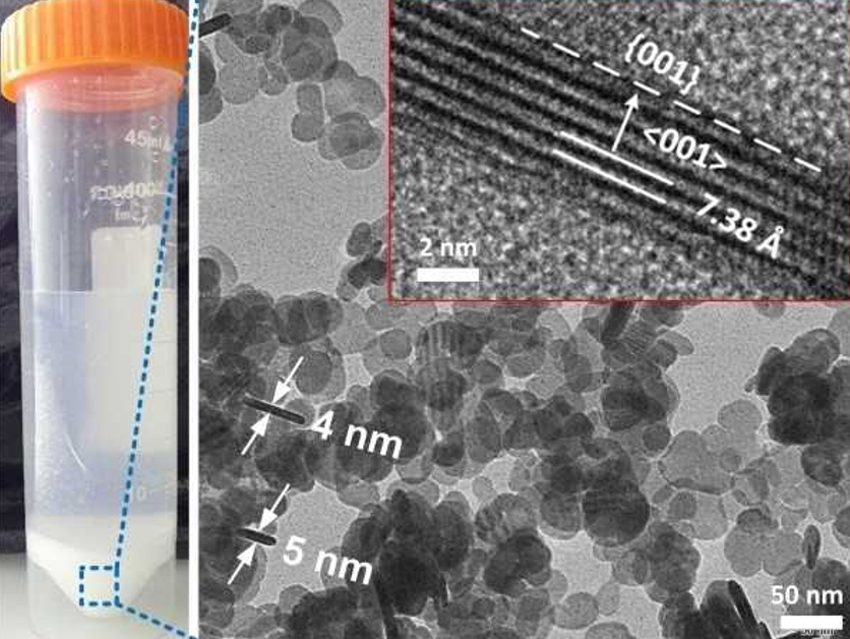Semiconductor photocatalysis has potential environmental and energy applications. Ultrathin BiOCl nanoplates (BiOCl-UTNs), for example, are promising photocatalysts with a thickness of several atomic layers. This material has a unique crystal configuration and better photocatalytic activity compared with its bulk analogue. Current methods for preparing BiOCl-UTNs need high reaction temperatures and pressures, as well as high-speed centrifugation to collect the product. This hampers their mass production and industrial application.
Cuncheng Li, Guang-Ning Liu, and colleague, University of Jinan, Shandong, China, have developed a poly(sodium 4-styrenesulfonate) (PSS)-assisted pathway for the mass production of BiOCl-UTNs at room temperature. The team injected an aqueous solution of Bi(NO3)3 into ethylene glycol and added PSS and NaCl. The desired product could easily be collected as the precipitate.
Over 6 g of BiOCl-UTNs with a thickness of 3–5 nm and a size of 30–50 nm can be synthesized and harvested per batch in an open vessel. The growth of thicker BiOCl nanoplates is prevented by the strong electrostatic interaction between the PSS and [Bi2O2]2+ layers in the material. The prepared BiOCl-UTNs have a high photocatalytic activity with respect to the degradation of antibiotics and organic dyes. This results from their large specific surface area, efficient light absorption, and fast charge separation and transfer.
- Poly(sodium 4-styrenesulfonate) Assisted Room-Temperature Synthesis for the Mass Production of Bismuth Oxychloride Ultrathin Nanoplates with Enhanced Photocatalytic Activity,
Malik Zeeshan Shahid, Yunwei Wei, Junnuan Wang, Guozhu Chen, Daowei Gao, Chen Ye, Yiqiang Sun, Guang-Ning Liu, Cuncheng Li,
ChemPlusChem 2019.
https://doi.org/10.1002/cplu.201900211




